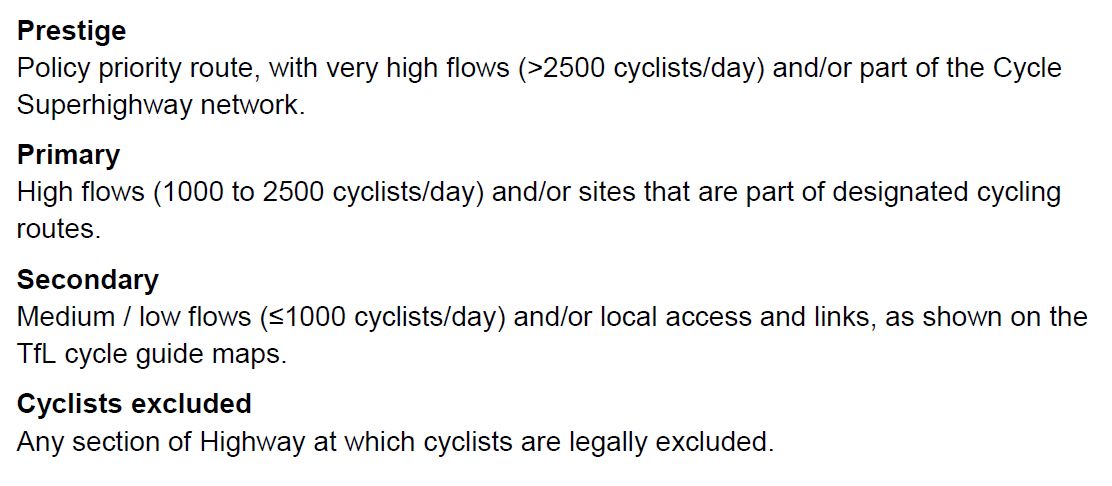Towards the end of last year, the LCC Policy Forum was asked to produce a position paper on buses and bikes. I have just finalised it and it can be seen on the LCC website here. There will be an associated motion debated at the 2014 AGM.
The request to produce a paper on buses and bikes came up for a couple of reasons. Firstly, there had been questions about whether bus lanes counted as ‘protected space’ for cycling. Secondly, because a scheme had come up – Cobden junction, in Camden – where a key reason for refusing protected space at the street level was predicted bus delays.
The Cobden scheme wasn’t the first example of predicted bus delays threatening cycle provision and won’t be the last. But there’s what’s now the ‘good example’ of the innovative Narroway scheme in Hackney, where re-routing buses has been used to separate modes at the network level.
The Narroway is now only for pedestrians and cycles (apart from very small numbers of motor vehicles accessing for deliveries and homes), while the Southbound buses that used to use it have been re-routed along two sides of an adjacent triangle. That long-desired scheme had been held up for many years by predicted bus delays. It hasn’t led to the feared delays to buses – they’ve actually got faster in one direction (albeit slower in the other). There have been benefits for cycling, which is now two-way and ‘protected space’ given almost all motor traffic has been removed, alongside gains for walking and the long degraded ‘place’ function of the Narroway. It’s hard to believe that for so many years it was a movement corridor for buses, choked up with these heavy vehicles pumping out diesel fumes, with walking and cycling marginalised.
You can find out more about the Narroway by looking at these two videos.
So for the past six months or more the Policy Forum has been writing its position paper. It’s not earth shattering; it represents a compromise position, given that there’s diversity of views in the Forum (and indeed the LCC more broadly) on this question. The paper does make it clear that bus lanes are not ‘protected space’, and that streets with busy bus routes are unlikely to be good enough for mass cycling, even if most other motor traffic is removed. The paper also argues that planners should think broadly about bus/cycle conflicts and not just assume a zero-sum game.
For example, separating out cycles at either the network or street level (i.e., either creating cycle-only streets, as in the Narroway, or if busy bus routes will remain, providing high quality segregated tracks) can provide time benefits for both. Buses are no longer held behind cycles (and vice versa). Pedestrians can benefit from improved liveability and reduced motor traffic. And providing a dense network offering separation from fast or heavy motor traffic is, the LCC believes (as do I), the condition for creating mass, inclusive cycling. Which can reduce pressure on London’s bus network, by providing a real alternative for many of people’s short bus trips which could, if conditions were better, be more easily cycled (or potentially even walked – some bus trips are very short). Then in turn, this will make space on buses for those trips which can’t be cycled or walked.
One final thought. Getting at last to the end of my detailed reading of the new London Cycle Design Standards, I found this interesting table, in the section on priorities for maintenance. Prestige and primary cycle routes are defined as being those on the route network and those carrying high volumes of cyclists. I would add, this should also include busy main roads with no good potential alternatives, whether they meet the other two criteria or not. Such a strategic cycle network (of course people could, and no doubt will, argue over precisely which routes should be on it, but for starters we’re talking Grid, Superhighways, LCN and many main roads) ought then to be our flagship. It must be inclusive for all potential cyclists, and built to the highest quality. Where currently there are bus routes, the question will then likely be whether to segregate at network level (as on the Narroway, which may suit high streets currently prevented from being ‘places’ by heavy bus flow) or at street level (as in some current TfL consultation plans involving main roads, where movement functions will remain important, such as CS5).



Pingback: Bus lanes are not cycling infrastructure | As Easy As Riding A Bike